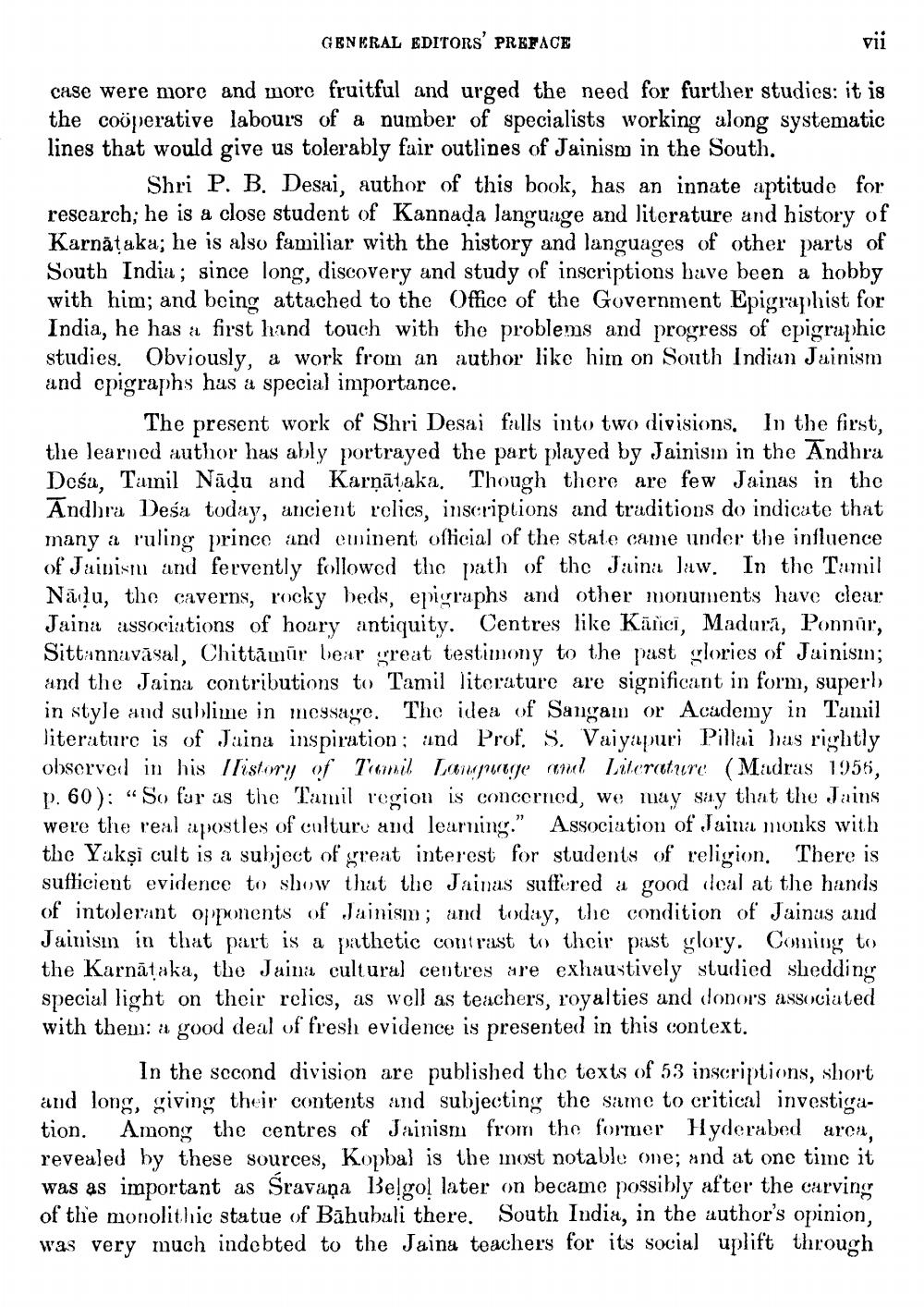________________
GENERAL EDITORS' PREFACE
vii
case were more and more fruitful and urged the need for further studies: it is the cooperative labours of a number of specialists working along systematic lines that would give us tolerably fair outlines of Jainism in the South.
Shri P. B. Desai, author of this book, has an innate aptitude for research; he is a close student of Kannada language and literature and history of Karnataka; he is also familiar with the history and languages of other parts of South India; since long, discovery and study of inscriptions have been a hobby with him; and being attached to the Office of the Government Epigraphist for India, he has a first hand touch with the problems and progress of epigraphic studies. Obviously, a work from an author like him on South Indian Jainism and epigraphs has a special importance.
The present work of Shri Desai falls into two divisions. In the first, the learned author has ably portrayed the part played by Jainism in the Andhra Desa, Tamil Nadu and Karnataka. Though there are few Jainas in the Andhra Desa today, ancient relics, inscriptions and traditions do indicate that many a ruling prince and eminent official of the state came under the influence of Jainism and fervently followed the path of the Jaina law. In the Tamil Nadu, the caverns, rocky beds, epigraphs and other monuments have clear Jaina associations of hoary antiquity. Centres like Kanci, Madură, Ponnur, Sittannavasal, Chittamur bear great testimony to the past glories of Jainism; and the Jaina contributions to Tamil literature are significant in form, superb in style and sublime in message. The idea of Sangam or Academy in Tamil literature is of Jaina inspiration; and Prof. S. Vaiyapuri Pillai has rightly observed in his History of Tamil Language and Literature (Madras 1955, p. 60): "So far as the Tamil region is concerned, we may say that the Jains were the real apostles of culture and learning." Association of Jaina monks with the Yakşi cult is a subject of great interest for students of religion. There is sufficient evidence to show that the Jainas suffered a good deal at the hands of intolerant opponents of Jainism; and today, the condition of Jainas and Jainism in that part is a pathetic contrast to their past glory. Coming to the Karnataka, the Jaina cultural centres are exhaustively studied shedding special light on their relics, as well as teachers, royalties and donors associated with them: a good deal of fresh evidence is presented in this context.
In the second division are published the texts of 53 inscriptions, short and long, giving their contents and subjecting the same to critical investigation. Among the centres of Jainism from the former Hyderabed area, revealed by these sources, Kopbal is the most notable one; and at one time it was as important as Sravana Belgol later on became possibly after the carving of the monolithic statue of Bahubali there. South India, in the author's opinion, was very much indebted to the Jaina teachers for its social uplift through




